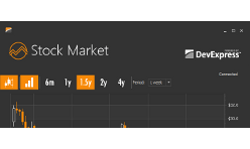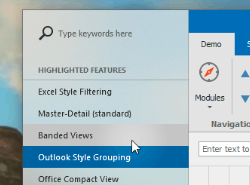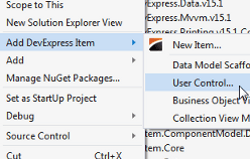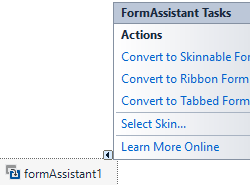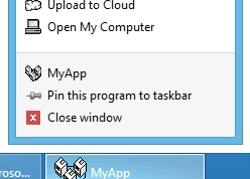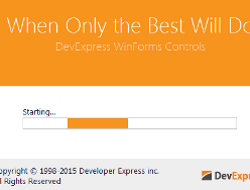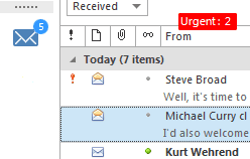Forms and User Controls
- 5 minutes to read
This document lists various types of DevExpress forms, which are the main visual elements of any WinForms application.
XtraForm | |
| XtraForm is a replacement of a traditional form that fully supports the DevExpress skinning feature. A Form’s background, borders and title bar - all become skin-able elements. This allows the XtraForm to deliver a unified appearance for your entire application. XtraForm can also be skinned differently at design time and runtime. Refer to the Menu Entries document to learn more about design-time settings. |
Ribbon Form | |
| The Ribbon Control introduces the Ribbon UI, which serves as a replacement for the traditional toolbar menu system. If you choose to build a Ribbon-based application UI, the RibbonForm is here to replace the bars-oriented XtraForm. Forms of this type share their title bars with Ribbons, creating a solid form layout and saving form space. And certainly, the RibbonForms as well as their XtraForm predecessors fully support DevExpress skins and other look&feel settings. |
Tabbed Form | |
| The Tabbed Form allows you to implement the tabbed UI, in which tabs are embedded in the form’s title bar. You can also display custom buttons next to the tabs when required. As the XtraForm descendant, the Tabbed Form fully supports DevExpress skins and Look and Feel mechanism. |
Fluent Design Form | |
| The FluentDesignForm is a Windows 10-inspired form that features:
|
XtraUserControl | |
| XtraUserControl is a DevExpress version of the standard User Control - an empty container that can host any set of controls and components within. Using the visual inheritance feature, you will be able to place DevExpress controls onto the XtraUserControl, inherit your own user control from it and still be able to invoke all DevExpress design-time elements like smart tags or control designers. |
Utilities and Helpers
Form Assistant | |
| You can always replace your standard WinForms form with an XtraForm, Ribbon Form or Tabbed Form by inheriting your form from the corresponding class in code. By using the Form Assistant component you can do the same without writing any code. Just drop this component onto the form and use its smart tag to select the desired form type. At any time you are free to convert your form back to its default type by using the same smart tag. Additionally, the component is able to modify the form appearance by selecting the desired skin. To do so, use the same smart tag and choose the appropriate skin from the related drop-down list. Once the skin is selected, the DefaultLookAndFeel component with all required settings will be automatically added. |
Taskbar Assistant | |
| Starting with Windows 7, application buttons displayed within the Windows taskbar serve not for simply navigating to this specific application. Taskbar buttons are able to show application preview when hovered, display custom buttons within this preview and invoke Jump Lists on right mouse click. A Jump List is a custom context menu that contains links to main application modules, recently used documents, general application commands or any other custom actions. With the TaskbarAssistant component, these powerful features are now available for your apps. The Taskbar Assistant provides the following features.
|
Splash Screen Manager | |
| The SplashScreenManager component allows you to create splash forms, displayed when the application is being launched or busy with a specific task. Certain splash forms support the automatic display on your main form’s startup, while other splash forms need to be manually displayed and closed. The following splash forms are supported.
|
Adorner UI Manager | |
| The AdornerUIManager is a component that provides a custom adorner layer - a transparent layer drawn above all UI elements. This layer can be used to draw arrows, hints, small elements and various visual effects. For instance, you can draw the number of unread messages above the ‘Mail’ button or implement a glow effect for the text field that needs to be filled or revised before a user is allowed to proceed to the next application page. |
